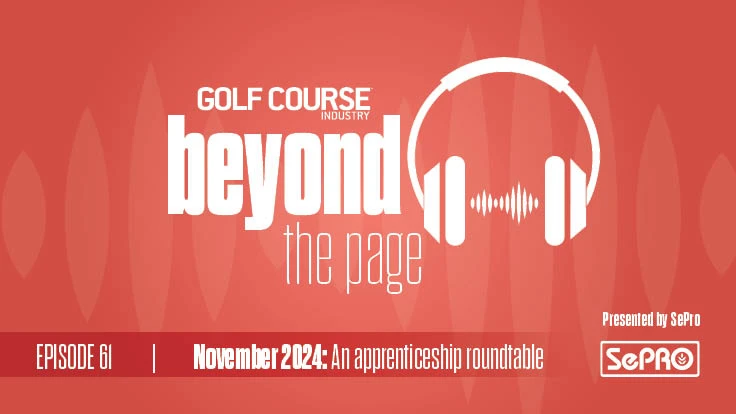 Many of us course design types are recently back from Chattanooga, Tenn., site of the 2012 American Society of Golf Course Architects annual meeting. There’s a lot of fraternizing that goes on at these events, but there’s a good amount of strategizing about where the game is going, too. Big picture stuff.
Many of us course design types are recently back from Chattanooga, Tenn., site of the 2012 American Society of Golf Course Architects annual meeting. There’s a lot of fraternizing that goes on at these events, but there’s a good amount of strategizing about where the game is going, too. Big picture stuff.
Everyone’s hearts are in the right place, I’m certain of that. But I’m quite amazed these days by how architects and other “guardians of the game” view that big picture. More and more, these big-picture conversations seem to be shorthand for reducing the length and difficulty of golf holes, and/or enabling the play of golf holes in less and less time.
The catch here, and it’s a big catch, is that we may be removing interest from those golf holes. We may be devaluing them.
My old friend, the architect Gary Panks, spoke for me at one point when he warned that all these efforts to play faster and get more golfers on/off the course will, if we’re not careful, destroy some really good golf holes.
Earlier this year, I wrote about this in light of the Tee It Forward initiative – a good idea for adapting full-sized holes to young and otherwise novice players. But it’s a tough task to carry this through an 18-hole routing, accommodating senior and women players, without effectively addressing the design of all 18 holes. You have to Design It Forward in order to Tee It Forward, and we have to ask ourselves: Is this initiative worth undertaking that expense? Is it worth risking the alienation of regular customers who appreciate the hole as is?
The way we think about bunkers today is indicative of where these discussions are taking the golf business, perhaps against our better judgment. When we aren’t talking about eliminating bunkers – to save money and make golf holes more “playable” (read: boring) – we’re talking about ways to make them more expensive via new liners and premier sand products.
One extreme feels like a shortcut. The other feels like we’re throwing money at something in the name of “excellence.” Neither gets at the heart the matter, in my view.
Let me frame the larger issue another way – a way superintendents will understand, because they think in these terms all day, every day – way more than architects do incidentally: Do these measures and initiatives add value? If so, for how many golfers do they add value?
If we want to attract new golfers, does it really make sense to simplify golf courses en masse? What happens when these novices develop into intermediate players – won’t they go elsewhere? I have to laugh when I hear people reminisce about the crappy old munis they played as kids. Yeah, they might romanticize those courses, those memories – but they wouldn’t be caught dead playing those tracks today. They were all they knew back then. When they got a glimpse of what a good course could provide, in terms of value, there was no going back.
We need to do a better job of creating and preserving value for our customers, the golfers at our courses and clubs. Throwing some tee markers down in fairways to create a 3,000-yard routing is a way to add value for kids and their parents – and most important, it’s simple. That act does not affect the hole’s value for other players.
It becomes much more complex, say, when you try to move the white tees forward for seniors, who then hit the ball into unseen hazards, or drive the ball past landing areas into the narrowest parts of fairways. This does not add value. In order to add that value, an entire hole must be assessed in light of what type of golfer is playing that new yardage.
Let’s boil it down and get specific: You know what adds value? Bunkers add value. Their role should be separated from the pace-of-play and course-difficulty equation. Eliminating them in the name of faster, easier play might save money or maybe even drive revenue in the short term. But ultimately, in the longer term, removing them waters down the value of golf holes.
Superintendents work at the confluence of these issues. It’s a balancing act, reconciling pressure from the top to make holes harder, make them easier, speed up play, bring down costs, etc. Superintendents do the actual balancing. They’re the ones who’ve always been best equipped to determine where the value is, where it can be preserved, where it should be added.
Back to the bunkers… How do you make a course harder? You make it longer and tighter right? A lot of people think bunkers make a course harder, but they don’t. Properly placed, they add value. Allow me to count the ways.
Directional Aid. Down in Tennessee, we ASGCA-ers played the Honors Course, an unfamiliar track for most of us. I can’t tell you how many times my caddie, or the player in our group with local knowledge, told me to “Aim for that bunker”, or “Play in front of that bunker”, or “Fly that bunker.” You can’t do that with distant trees lining a fairway. If you eliminate too many bunkers in the name of cost-cutting, what’s left? Does that add value?
Flexibility/Strategy. Bunkers provide golfers the opportunity to play tactically, using the hole’s width, whereas trees do not. A long dogleg lined with trees will crush the new or short-hitting player. If they can’t get to the corner, they’re screwed. But if that corner is guarded by bunkering, he/she can play in front and cut the corner on the next shot. I’m not advocating for a sea of bunkers, but a wide fairway with a smattering of well-placed bunkers can be played a hundred different ways, most of them attainable by new or short-hitting golfers. That’s value for all players, not just good ones.
Recoverability. Sand shots aren’t easy to master, but even a novice player would rather play from a fairway bunker than a forest. You can’t play at all from a pond, of course. Catch bunkers are an inherent sign that trouble lurks beyond, and they can actually protect golfers from unseen hazards. Now, let’s be honest: An “unseen” hazard is problematic in its own right, but that bunker serves a distinct purpose. Can’t put a value on that.
Aesthetics. Bunkers break up the monotony of green. They provide texture and contrast from the tee. On a dead straight hole, extending bunkers out into the line of play makes the fairway appear to weave back and forth between them.
Harmony/Balance. Bunkers help to achieve visual balance and establish scale and proportion, which contributes to the visual harmony of a hole. In other words, they make things look pleasing. In some cases, they can even be placed to make things look intentionally unpleasing (harder than they are) or to affect depth perception (camouflage).
Think about all the trees on your golf course. How much value do they add to the golf experience? They can certainly evoke pleasantness, but maybe a handful of trees have the sort of comprehensive impact mentioned above. The rest are either inconsequential or actively eliminate value – shot values, but also agronomic value when you consider how trees compete with turf for soil nutrition and sunlight.
Now think about your bunkers. How many add value? In a variety of circumstances, I’m betting they all do. And I’m betting most superintendents could think of a half dozen more, in key spots, that could add even more.
My point here isn’t that we should go on a bunker-building binge. My point is, we need to assess our golf courses based on the value each feature provides. It’s a cost-benefit analysis in one way.
With the resources available, we must maximize the value we provide to golfers because it’s the value of that golfing experience – not ease, not speed of play – that hooks new players and continually engages regular players.
Bob Lohmann is founder, president, and principal architect of Lohmann Golf Designs and a frequent GCI contributor.

Explore the June 2012 Issue
Check out more from this issue and find your next story to read.
Latest from Golf Course Industry
- Making the grade — at or near grade
- PBI-Gordon receives local business honor
- Florida's Windsor takes environmental step
- GCSAA names Grassroots Ambassador Leadership Award winners
- Turf & Soil Diagnostics promotes Duane Otto to president
- Reel Turf Techs: Ben Herberger
- Brian Costello elected ASGCA president
- The Aquatrols Company story





